Abrasive roller and abrasive cutter for bodywork

Abrasive roller and abrasive cutter for cars and motorbikes
-
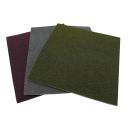 3742.0003Ultra fine abrasive cuttinggreen 115mm x 140mm box 20
3742.0003Ultra fine abrasive cuttinggreen 115mm x 140mm box 20 -
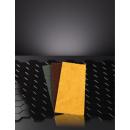 3751.000xFrosting cut115x280mm - Box of 20
3751.000xFrosting cut115x280mm - Box of 20 -
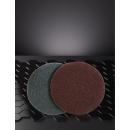 3752.0151Red polishing discsExtra thin - Ø150mm
3752.0151Red polishing discsExtra thin - Ø150mm -
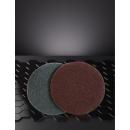 3752.0152Grey polishing discsUltra thin - Ø150mm
3752.0152Grey polishing discsUltra thin - Ø150mm -
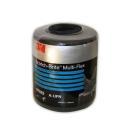 752x3M Scotch Brite Multiflex10x20cm - Roll of 60 sheets
752x3M Scotch Brite Multiflex10x20cm - Roll of 60 sheets -
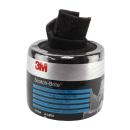 790x3M scotch Brite Pre cut115x 150mm - Roll of 35 sheets
790x3M scotch Brite Pre cut115x 150mm - Roll of 35 sheets -
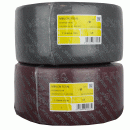 MIRLONMIRLON roller115mmx10m
MIRLONMIRLON roller115mmx10m
︾
Everything you need to know about abrasive rollers and abrasive cutters for car and motorbike bodywork:
Abrasive rollers and abrasive cutters for bodywork sanding
These products are ideal for curved surfaces. All these abrasive fibre rolls allow you to sand metal surfaces, undercoats or paints. Carross offers the 3150 - 155mm x 25m abrasive roller from 4CR or the 3M abrasive roller. The page you are reading relates to fibre sanding belts: these products are perfect for managing the sanding of your car and will allow you to manage the finishing of your bodywork. Fibre abrasive rolls are versatile: they can be used for a wide range of finishing and touch-up tasks on your bodywork. They are suitable for finishing a wide range of materials including plastic, metal and steel. You'll find 3M Scotch Brite (which we'll describe in more detail below) and various fibre abrasive rollers from the German brand 4CR, which specialises in bodywork.
More generally, every abrasive you choose has been rigorously selected by the experts at Carross. If you can't find what you're looking for, or if you have any questions about a particular abrasive, whether it's a sanding disc or a foam or fibre sanding roller, don't hesitate to contact our sales team on 01 60 27 20 19.
Carross fibre abrasive rollers
The equipment offered by Carross is professional equipment designed for body repairers. However, if you're a bodywork enthusiast, don't deprive yourself of the best bodywork equipment!
Carross has the right fibre abrasive for the job you have in mind. Our fibre abrasives have already been used extensively in many body shops: they are requested again and again. Among the most popular products is 3M's pre-cut Brite tape.
Product focus: 3M Scotch-Brite pre-cut sanding roll
3M Scotch Brite in its pre-cut sheet format is a must-have in any body shop: it saves time, but it also saves money: the fibre abrasive is designed to prevent clogging, so it needs changing less often than normal. This product is also highly acclaimed for its versatility: it is totally suited to manual use. What's more, this fibreglass abrasive is versatile and can be used on a wide range of materials: wood, metal, plastics, rubber, glass, etc. It's even useful if you need to work on ceramics or porcelain (you never know). Each pre-cut sheet is reusable and resistant to wear and tear, shredding, etc. You can be sure that this 3M abrasive will not rust, further extending its life. The 3M Scotch-Brite pre-cut abrasive roll is made from very fine aluminium oxide or ultra-fine silicon carbide grit. This abrasive roll is available in 150x115mm format.
Application of the 3M Scotch-Brite pre-cut abrasive roller
3M abrasives can be used to homogenise steel and brushed aluminium or to produce a matt finish on many metals. It can also be used to remove imperfections, clean tools or prepare lacquered surfaces before painting.
Abrasive cutting for bodywork
Carross offers a wide range of abrasives, which you can find on this page. We have already introduced you to the 3M Scotch-Brite pre-cut abrasive, but many other products are available in the Carross online shop: polishing cuts available in different thicknesses and colours, matting and cleaning pastes, polishing discs, various fibre abrasive rolls...
The differences between abrasive rollers and abrasive cutters for car or motorbike bodywork :
Abrasive rollers and abrasive cutters are two types of tool used in car bodywork, but they differ in their form, application and method of use. Here are some differences between abrasive rollers and abrasive cutting:
Abrasive rolls :
Shape: Abrasive rollers come in the form of wound cylinders or strips. They are often mounted on supports or handles to make them easier to use.
Application: Abrasive rollers are mainly used for sanding large surfaces, such as body panels. They are practical for linear sanding over large areas.
Flexibility: Foam sanding rolls are flexible and adapt well to the contours of the bodywork, making them ideal for sanding curved surfaces.
Variety of grits: Available in a variety of grits, sanding rollers can be used for jobs ranging from initial sanding to fine polishing.
Dry or wet use: Some abrasive rollers are designed for dry use, while others can be used with water to reduce the heat generated and minimise dust.
Abrasive cutting :
Shape: Abrasive cutting usually comes in the form of flat discs, sheets or strips. They can be attached to holders or used manually.
Application: Abrasive cutting is often used to remove paint, trim sharp edges or make precise cuts. It is particularly useful for precision work.
Flexibility: Compared to abrasive rollers, abrasive cutting can be less flexible and less suited to complex contours.
Variety of grits: Like abrasive rollers, abrasive cutting is available in a variety of grits for applications ranging from coarse to fine.
Dry use: Abrasive cutting is generally used dry, although some types can be used with lubricants to improve performance.
In summary, abrasive rollers are suitable for sanding large surfaces, offer flexibility to follow contours, and are available in a range of grits for various applications. Abrasive cutters, on the other hand, are often used for precise cutting, deburring and surface preparation tasks prior to painting. The choice between the two depends on the specific needs of the bodywork project.
Frequently asked questions about the use of Abrasive discs and abrasive cutting :
Car bodywork users frequently ask essential questions about the application and use of abrasive rollers and abrasive cutters. Here is a guide answering these common questions to help amateurs and professionals get the most out of these tools:
1. When should I choose an abrasive roller over an abrasive cutter, and vice versa?
Choose an abrasive roller for sanding large surfaces and following the contours of the bodywork. Choose an abrasive cutter for precise cutting, deburring or removing specific coatings.
2. What's the difference between foam abrasive tape and conventional abrasive tape?
Foam abrasive rollers are softer and more flexible, adapted to the contours of the bodywork. Conventional abrasive rollers can be used for flat surfaces and are available in a wider range of materials.
3. Can I use abrasive rollers on plastic or Fiberglass surfaces?
Yes, some abrasive rollers are designed to be gentle on delicate surfaces such as plastic or Fiberglass. Choose a fine grain to avoid damaging the surface.
4. How can I minimise circular marks when sanding with an abrasive roller?
Use regular back-and-forth or circular movements. Avoid staying in one place for too long and adjust the pressure as required.
5. When should I use an abrasive cutter instead of a file to remove paint?
Abrasive cutting is effective for removing paint from large surfaces, while a file can be more precise for specific areas. Choose according to the size of the job.
6. How do I choose the right grit for an abrasive cutting job?
For coarse cuts, opt for a lower grit. For finer cuts or finishing, use a higher grit.
7. Can I use an abrasive cut to remove rust from bodywork?
Yes, an abrasive cut is effective for removing rust. Choose an appropriate grit according to the degree of corrosion.
8. What types of holders or handles are compatible with abrasive rollers and abrasive cuts?
Make sure that the holder or handle is compatible with the type of abrasive you are using. Some holders are specially designed to accommodate these tools.
By understanding these answers, users can optimise the use of abrasive rollers and abrasive cutters in the field of car bodywork. Selecting the right tool for the job, choosing the right grit, and following good practice will all contribute to successful bodywork.